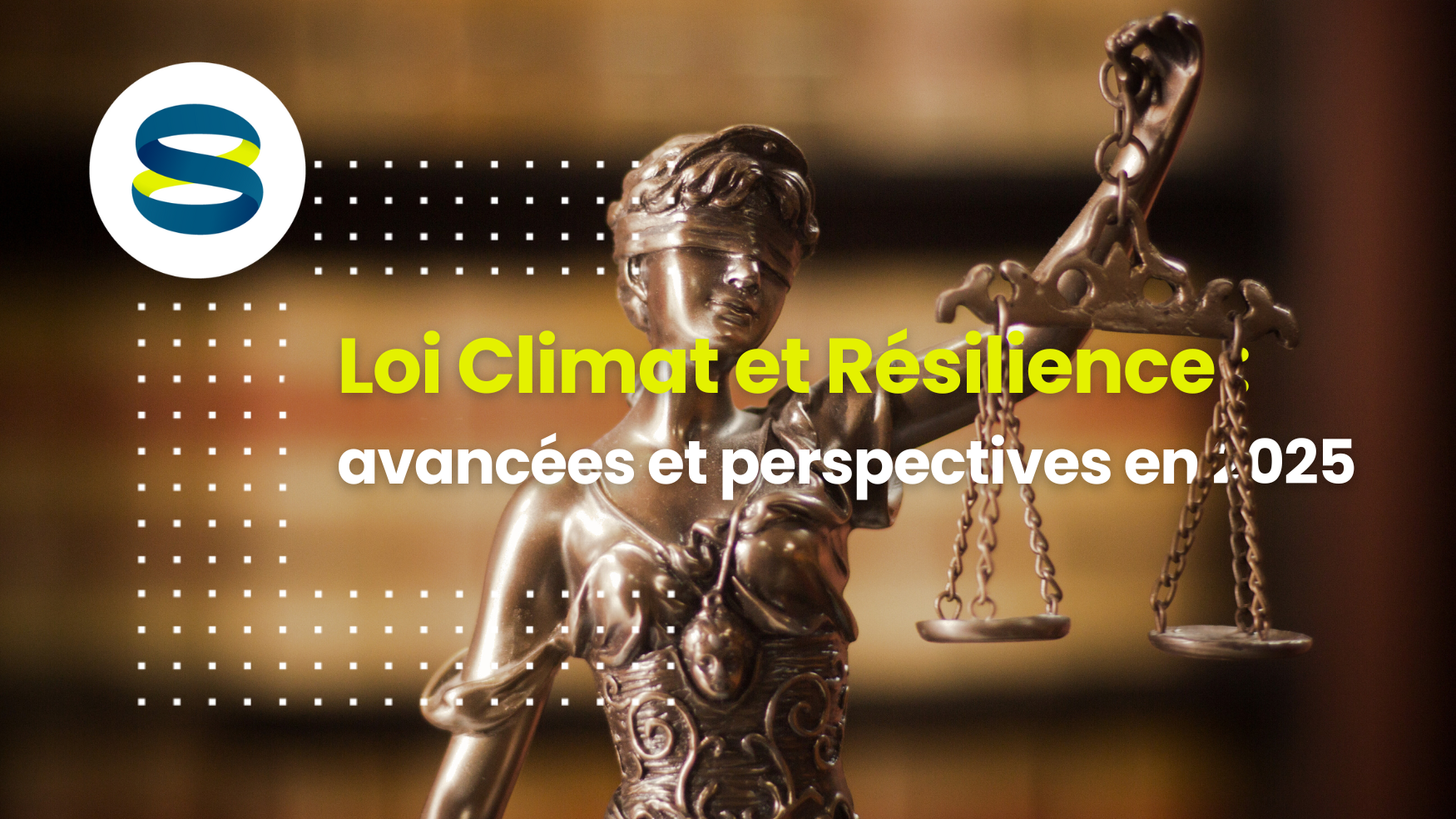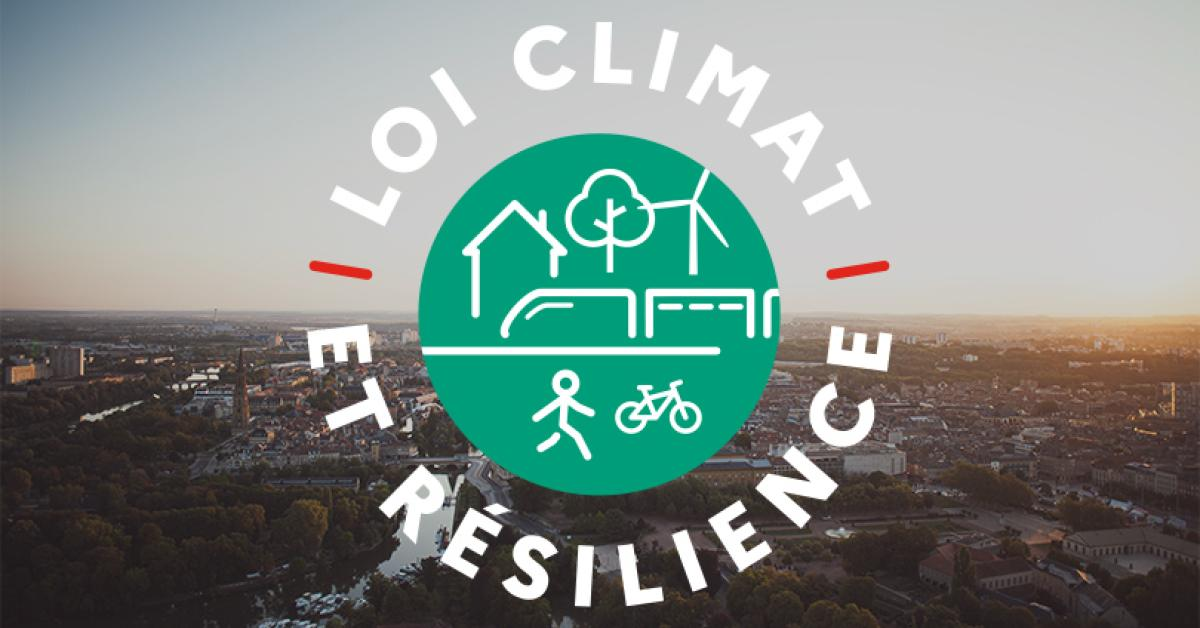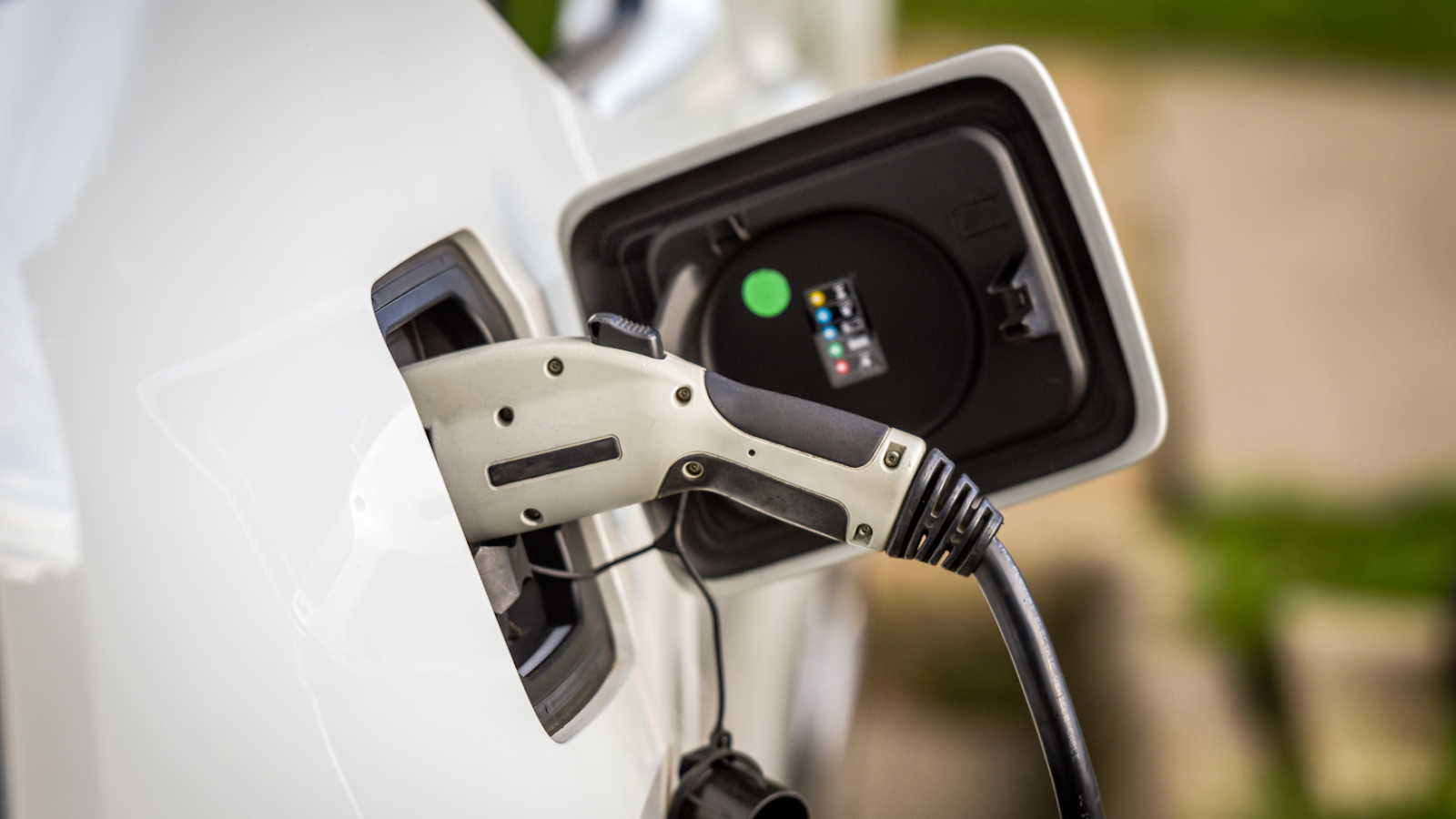

July 27, 2025
9
Min reading

Promulgated on August 22, 2021, the Climate and Resilience Law sets out France's energy and environmental roadmap.
Driven by a strong ambition, it intends to engage the whole of society in the era of ecological transition, fight against climate change and strengthen resilience in the face of its effects.
For five years, it has guided public decisions and has been implemented progressively, at the pace of implementing decrees. But today, the law is weakened.
What is the Climate and Resilience Law? What are the main measures? Where are we in 2025?
Between concrete advances, setbacks and resistances, the Climate and Resilience Law embodies the difficulties of reconciling the ecological imperative, social justice, economic constraints and partisan interests.

Promulgated on August 22, 2021, the Climate and Resilience Law is intended to be a decisive turning point in France's decarbonization policy. In a tense national context, it aims to reconcile ecology and social justice for an acceptable and accepted energy transition.
The Climate and Resilience Law of 2021 is in line with the environmental laws of 2015 (energy transition law for green growth - LTECV) and 2019 (Energy and Climate law). It broadens their scope of action, drawing inspiration from proposals from the Citizens' Climate Assembly (CCC), resulting from the major national debate launched by Emmanuel Macron after the “Yellow Vests” crisis.
A law full of 300 articles, the Climate and Resilience Law intends fight against climate change and strengthen resilience in the face of its effects, while maintaining social justice.
Adopted by a large majority, the Climate and Resilience Law is a Founding law of the national energy strategy. It aligns the French State with the European objective: reduce greenhouse gas (GHG) emissions by at least 55% by 2030.
The law also introduces a permanent evaluation system, under the responsibility of the High Council for Climate.
The legislative ambition is great. It's aboutpromote structural transformations in society in five key areas : consumption, production and work, travel, housing and food.
The Climate and Resilience Act devotes several articles to daily consumption and food. Its first effects can be observed in our daily lives.
The Climate and Resilience Law establishes environmental labelling on consumer goods. Article 2 sets out the objective of informing consumers “in a reliable and understandable way” upon “the environmental impact of goods and services over their entire life cycle”.
The first implementing decree is expected before the end of 2025 to frame the display in textiles. A technical consultation is under way for the food sector. The generalization of displays to cosmetics and furniture should follow in 2027.
The Climate and Resilience Law encourages the reduction of meat consumption, whose production is a major greenhouse gas emitter.
With this in mind, Since the 1Er January 2023, university canteens and public institutions offering several menu choices are required to offer a vegetarian option. This measure reinforces the momentum started by the 2018 Egalim law, which requires one vegetarian menu per week.
Article 23 of the Climate and Resilience Law provides that large and medium-sized stores of more than 400 m² of sales devote 20% of their surface area in bulk in 2030.
A consultation on the draft decree was held in early 2025, with priority given to food products. Cosmetics and detergents are currently out of the picture.
The law also encourages repair, reuse, and recycling of products. A decree of 14 April 2022 establishes the national strategy for the reduction, reuse and recycling of unique plastic packaging (3R strategy).
Forbidden by article 7 of the Climate and Resilience Law, Fossil fuel advertising is still tolerated in practice. The absence of an implementing decree and sanctions mechanism maintains legal uncertainty.
In fact, the law provides that“a decree in the Council of State establishes the list of energies concerned by the ban as well as the expected requirements for renewable energy to be the subject of advertising actions”. But, while a consultation took place in 2022, no text has yet been published.
This vagueness in advertising on fossil fuels invites caution to observe the application of theBan on advertising on cars that emit the most CO₂ in 2028...

The Climate and Resilience Law strongly affirms France's commitment to renewables and carbon-free. However, its implementation is facing national and local resistance.
The Climate and Resilience Law requires companies toequip at least 30% of the roof area of their buildings with photovoltaic panels or green them industrial and tertiary sectors. The percentage rises to 40% in 2026 and 50% in 2027. Since 2023, any new construction or extension of more than 500 m² of land space has been concerned.
Article 83 also facilitatesterritorial adaptation of multiannual energy programming (PPE) and its transposition into regional objectives. However, the implementing decree is pending the publication of the PPE3.
Measures have also been taken to support the development of carbon-free energies, like hydroelectricity, biogas, hydrogen and wind turbines.
Did you know that?
Sirenergies supports you in your energy transition projects : solar self-consumption, green energy contracts...).
For Achieve your goals While optimizing your energy costs :
The Climate and Resilience Law reinforces objectives for greening vehicle fleets established by the Mobility Orientation Act (LOM) in 2019. From 2027, the State must reach a 70% share of very low-emission vehicles when renewing its fleets. Communities and businesses have until 2030 to reach this goal, with an intermediate milestone of 40% in 2025 and 2027 respectively.
The law also supports the deployment of charging stations for electric vehicless. Since the 1Er January 2025, non-residential car parks and large companies with more than 250 employees must have one charging point for 20 locations.

If the Climate and Resilience Law is ambitious on displacement, it is clear that in 2025 the sensitivity of the subject, with concrete measures restricted or even suppressed.
Uncertainty about low emission zones (LEZs)
Adopted by the National Assembly on June 17, 2025 as part of the vote on the law to simplify economic life, The abolition of ZFE marks a The other side of the Climate and Resilience Act.
A flagship measure of the 2021 law, low-emission zones were intended to improve local air quality by prohibiting the circulation of the oldest vehicles. But this measure is emblematic of the difficulty of reconciling ecology and social justice.
The future of the ZFEs remains uncertain today, suspended at the opinion of the Constitutional Council. This could in fact cancel the decision of the deputies, considering the abolition of the ZFE as a “legislative jumper” too far from the initial subject of the law. Cities could also decide to circumvent the law by publishing municipal bylaws.
Another setback in the Climate and Resilience Law: the ban on short domestic flights when there is an alternative train in less than 2 hours and a half. If this measure has indeed come into force, it is restricted by the implementing decree of May 22, 2023.
Because of the numerous derogations, The law only concerns three airlines connecting Paris Orly Airport to the cities of Nantes, Bordeaux and Lyon, representing 2.5% of France's domestic air traffic. If this ban should make it possible to avoid 55,000 tons of CO₂ emissions per year, this is a drop in the bucket compared to the 2.1 million tons of CO₂ generated by domestic flights in 2019.
Among the good news to remember, carbon offsetting for domestic flights provided for in article 147 of the Climate and Resilience Law has been installation by the implementing decree of April 2022. In particular, it makes it possible to finance agricultural and forestry projects in France, under the control of the Ministry of Ecological Transition.
Relaunched by the Climate and Resilience Law, Road tax for heavy goods vehicles remains a delicate subject. At the free choice of the Regions, its implementation remains hampered by the memory of the “red caps” movement of 2013. Following the publication of the implementing decree on December 27, 2023, only the European community of Alsace plans to implement it in 2027.
On the other hand, another measure of the Climate and Resilience Law is enjoying a timid but promising success. Article 124 allows the experimentation for three years of lanes reserved for carpooling on motorways or expressways. At the end of 2023, 52 kilometers were concerned throughout the national territory. An experiment has been underway since March 3, 2025 on the Paris ring road and the A1 and A13 motorways.
Last measure to watch out for: Expected end of the sale of the most polluting new passenger cars in 2030 (emitting more than 95 g CO₂ per km). The ban must be extended in 2040 to new heavy vehicles running on fossil fuels.

If the measures relating to urban planning and housing under the Climate and Resilience Law are gradually implemented, they remain under threat.
The Climate and Resilience Law sets ambitious goals in terms of soil artificialization: reach zero net artificialization (NAN) in 2050. Concretely, any construction must be compensated by the renaturation of an equivalent surface. The law also provides for 30% of protected areas to sanctuary protected and sensitive natural areas.
However, faced with the difficulties encountered by local elected officials, The law is relaxed in March 2025 by the Senate, marking a new setback in the Climate and Resilience Law. The new text validates major changes:
The Climate and Resilience Law acts onprogressive ban the rental of thermal colanders. Since the 1Er January 2025, all homes classified G under the DPE (Energy Performance Diagnosis) are prohibited to rent. The ban is to extend in 2028 to F classified homes, then to E in 2034.
Faced with the scale of energy renovation, voices are however being raised for call for the relaxation of the law. In October 2024, the government of Michel Barnier mentioned an easing of the calendar. A bill was also adopted in April 2025 at first reading by the Senate to clarify the conditions under which energy works are mandatory. There is no doubt that the question should return to the heart of parliamentary debate soon.
Note that the Collective DPE And theMulti-Year Work Plan (PPT) obligation, implemented by the Climate and Resilience Law, have been gradually applied to condominiums since 2023.
The Climate and Resilience Law marks a major legal advance, by introducing the Offence of ecocide in the Environmental Code.
Any threat to the environment may be sanctioned a fine of 250,000 euros and a term of three years in prison. In the most serious cases qualified as ecocide, the penalties incurred amount to a maximum of 10 years in prison and 4.5 million euros in fines for natural persons.
To date, no conviction has yet been pronounced in France for ecocide.
To conclude...
Four years after its promulgation, the Climate and Resilience Law embodies both the hopes and the tensions of the ecological transition in France.
While some concrete measures are beginning to transform uses - consumption, food, food, housing, energy - others are struggling to impose themselves or are receding in the face of economic, social or political pressures.
Faced with the climate emergency, France is today at a crossroads.
Between the desire for transformation, complex trade-offs, inertia and resistance, it must prove its ability to reconcile environmental ambitions and realities on the ground, in order to make the energy transition acceptable and build a sustainable future for all.



.png)

For companies and communities that wish to anticipate ESG obligations, reduce their carbon footprint and structure a climate strategy.